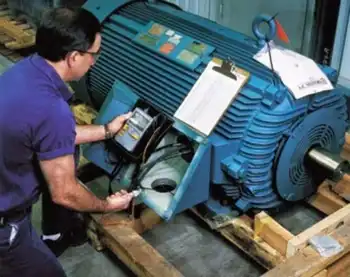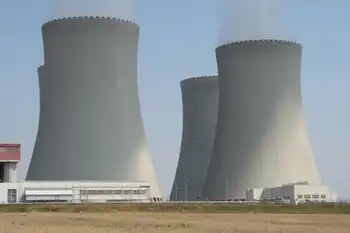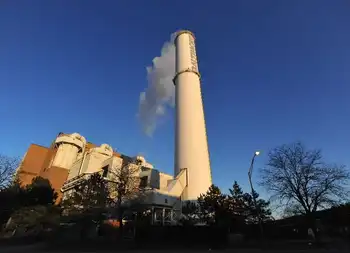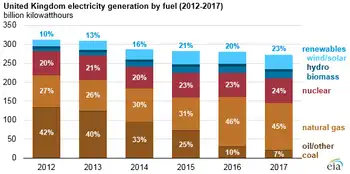The road to deregulation is growing bumpy
By McClatchy Tribune News
Arc Flash Training CSA Z462 - Electrical Safety Essentials
Our customized live online or in‑person group training can be delivered to your staff at your location.

- Live Online
- 6 hours Instructor-led
- Group Training Available
Deregulated markets, new nuclear power plants and more high-tension power lines - that is what big energy companies nationwide have had in mind. But first they'll have to overcome a sudden groundswell of resistance. No one knows this better than PPL Corp., whose agenda largely mirrors that of the broader electric industry. In Harrisburg and Washington D.C., the Allentown company has suddenly found itself fending off challenges to its plans and attacks on its character.
"This legislature enacted (electricity) deregulation. And it's up to this legislature to fix it - because it is not working," Sen. Lisa Boscola, D-Northampton, declared in a state Senate speech. "I hope all the CEOs of all of Pennsylvania's energy companies are listening.... There is a difference between need and greed."
Much is at stake for PPL customers, as well. And the price of electricity in 2010, when rate caps expire, is only part of it. Decisions now under debate at both the state or federal levels of government could affect the affordability and reliability of electricity for years to come. Deregulation under debate Under pressure from energy companies and some of their biggest industrial customers, Pennsylvania began to deregulate its electric industry in 1996.
The change meant the Public Utility Commission would no longer be able to set electricity prices, as it had for decades; rather, prices would be determined by competitive market forces. Temporary rate caps were put in place to protect customers from short-term price volatility. The final step in the gradual transition to deregulation, thus, is end of rate caps.
For PPL, that's supposed to be Jan. 1, 2010, when the company expects to raise rates 35 percent for residents and up to 42 percent for some businesses - and to collect a record $1.5 billion profit. But Boscola, D-Northampton, and Rep. Camille George, D-Clearfield, have drafted bills that would keep caps in place for years to come.
PPL, opposed to the Boscola and George proposals, says the rising cost of coal, oil, natural gas and other power-plant fuel have driven up the price of electricity. An extension could force PPL subsidiary PPL Electric Utilities, which serves 1.4 million Pennsylvania customers, into bankruptcy, according to the company.
Critics of the electric industry, however, argue that fuel cost doesn't fully explain the increase in electricity prices. They accuse energy companies of profiteering from an easy-to-manipulate, uncompetitive market. In 2007, PPL earned a record $1.3 billion profit - a 51 percent increase over the previous record set just a year earlier.
Tyrone Christy, a member of the Pennsylvania Public Utility Commission, is among those calling for re-regulation of some sort. For example, he wants electricity providers such as PPL subsidiary PPL Electric Utilities to be required to enter into long-term contracts.
Such contracts would give consumers stable prices, according to Christy. He says the regional spot markets and auctions that energy companies are now using to buy and sell electricity result in artificially inflated prices.
"Competition - I'll just say it - I think has failed," he said at a hearing in Harrisburg last month.
Hoping to make a bitter pill easier to swallow, PPL has proposed a "phase in" plan.
It would allow customers to divide their 2010 rate hike into smaller chunks that would start taking effect this summer. Money from those payments made in 2008 and 2009 would be applied to bills in 2010, 2011 and 2012. As a result, rates for the average residential customer would go up about 7 percent in both 2008 and in 2009, and about 6 percent annually from 2010 through 2012.
Under a tentative agreement this month between PPL and the state's consumer and small business advocates, the plan would be "opt-in," meaning it would apply only to those customers who ask to participate. The Public Utility Commission is expected to mak a final ruling on the matter in the spring.
Another PPL initiative - one likely to affect customers well beyond 2012 - is time-of-use billing, which would enable the company to charge customers different rates at different times of the day. On this front, at least, PPL enjoys widespread support.
Among the biggest advocates of time-of-use billing is the Rendell administration. According to economists, the approach has multiple benefits: First, it would allow individual customers to save money by shifting electricity consumption to off-peak hours when the price of electricity is lowest. That, in turn, would relieve pressure on power plants, transmission lines and electricity prices when demand for electricity is high and supply is stretched thin.
PPL began preparing to implement time-of-use billing in the first half of this decade, with the installation of automated meters that can transmit data instantaneously.
PPL's time-of-use pilot program, first launched in the summer 2002, has since been open to 300 customers every summer. A Web site allows participants to access their meter data from any computer with an Internet connection. The company plans to expand the program to 600 customers this year.
The likelihood of a huge rate hike in 2010 has politicians in Harrisburg making speeches about re-regulation. But so far such talk has done little to slow down the energy industry's push to remake the electric grid. PPL, for example, is helping to build a high-tension power line linking eastern Pennsylvania and New Jersey.
It is just one of many such projects nationwide intended to facilitate an increase in interstate electricity trading caused in part by deregulation. The Pennsylvania-New Jersey line will start at PPL Corp.'s Susquehanna nuclear power plant, about 75 miles northwest of the Lehigh Valley in Salem Township, Luzerne County. It will end at the Roseland substation near Newark, N.J.
PPL describes the project, which would cut a 100-mile-long, 200-foot-wide swath through the rolling hills of northeast Pennsylvania, as a necessity. If the grid isn't upgraded, it could fail, causing blackouts, according to the company.
PPL stands to gain as well, especially if it follows through with tentative plans to build a third Susquehanna reactor. Electricity generated by PPL's Pennsylvania power plants will be able to flow along the new line into New Jersey, where it'll fetch a higher price than in the state where it originated.
PPL has submitted plans for the reactor to federal regulators. But the company's ability to secure the financing necessary to move forward with the project depends on the availability of government-backed loans - something Congress has so far refused to approve. PPL, meanwhile, has sent engineers into the field to sight a path for the Pennsylvania-New Jersey line.
Public Service Electric and Gas Co. of Newark and FirstEnergy Corp. of Akron, Ohio, are responsible for about 30 miles of line on the New Jersey side.
It's work that is sure to set off a political firestorm. The 150-foot steel towers that support high-tension power lines are widely regarded as eyesores, and building them often requires condemnation of private property through eminent domain.
In March, state House Majority Leader Bill DeWeese, D-Greene, and 38 of his Democratic House colleagues sent a letter to the U.S. Senate challenging a controversial 2005 federal law that shifted final say over construction of transmission lines from state officials to the Federal Energy Regulatory Commission. The law, the letter reads, "has the potential to disrupt the fundamental balance of power between local, state and federal governments in land use issues."
A PPL spokesman said the company won't make a final decision on the path of the Pennsylvania-New Jersey line before completing "an extensive public input process" on the matter later this year.











